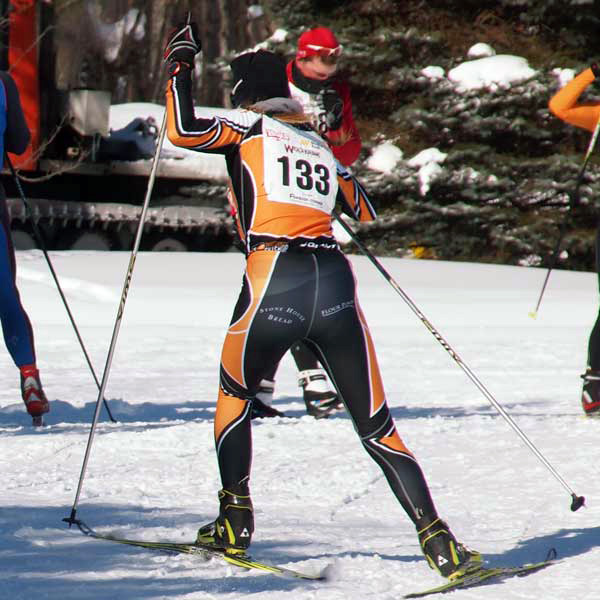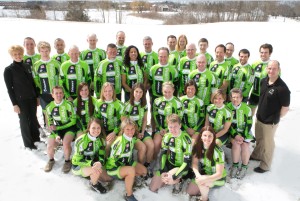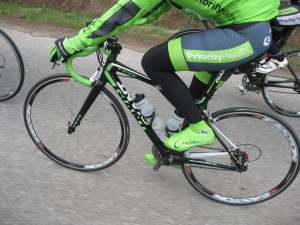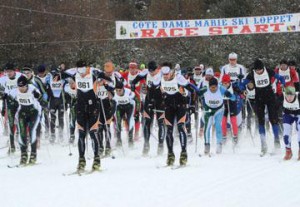Earlier this year we announced a new game in town with Orthopaedic Associates of Michigan taking the title for our our nearly decade-old Multi-Sport Program in our blog: “Michigan’s Premier Elite Multi-Sport Teams win OAM NOW Title  Sponsorship”. With OAM’s commitment to promote healthy lifestyle and to help develop tomorrow’s new talent, we look forward to the great things to come from this program. Check out who will be racing in the team’s inaugural season at TeamOAMNOW.com. You’ll also find a comprehensive events calendar that offers a one-stop resource to what events are happening each week in every endurance discipline and we’ll highlight our favorites. Check back often as our elite athletes and coaches offer training and racing tips and techniques in our team blog.
Sponsorship”. With OAM’s commitment to promote healthy lifestyle and to help develop tomorrow’s new talent, we look forward to the great things to come from this program. Check out who will be racing in the team’s inaugural season at TeamOAMNOW.com. You’ll also find a comprehensive events calendar that offers a one-stop resource to what events are happening each week in every endurance discipline and we’ll highlight our favorites. Check back often as our elite athletes and coaches offer training and racing tips and techniques in our team blog.
Who is Team OAM NOW Racing? Check us out at TeamOAMNOW.com !
May 12th, 2014 by Cheryl SherwoodAM’s Torres One Step Closer to 2016 Rio Olympic Dream…
April 1st, 2014 by Athletic Mentors Raquel Torres has been training hard and making great progress toward reaching her dream goal of qualifying for the 2016 Rio Olympic Games for her home country of the Dominican Republic.
Raquel Torres has been training hard and making great progress toward reaching her dream goal of qualifying for the 2016 Rio Olympic Games for her home country of the Dominican Republic.
With this being her first real full season back to competition since her teenage years, Raquel is gaining qualifying points and confidence as she gets more international races under her belt.
She’s cracked the top 10 in all 3 of her ITU races in the start of this season, with a 4th place in Chile on March 30th, just 3 minutes off the podium.
Raquel is staying in South America for a few more races in April before returning home to Kalamazoo to her very supportive husband and adorable daughter.
Stay tuned for more race updates throughout April and the year as her quest to Rio continues…
Triathlete Spring Swim Class – Registration is Now OPEN!
April 1st, 2014 by Cheryl SherwoodWith winter slow to end, the open water swimming is sure to be extra cold! Join us for this clinic to prepare for the open water and your first race. We’ll do some high intensity workouts to get ready for those high anxiety race starts and pull lane markers to mimic the open water experience with swim buoys and group starts. If you would like to feel ready to race when the season starts, this 4 week class will give you the confidence you are looking for in your race-ready fitness. Register Now as capacity is limited. Class starts April 18th.
Click here for details and to register.
Barry Roubaix – Women’s Race Report
March 23rd, 2014 by Roxane Kippen, USA Triathlon Certified CoachBarry Roubaix has quickly become the largest gravel road race in America and it is held right here in West Michigan every March. Conditions over the past few years have ranged from 50 degrees and dry, to 19 degrees and icy. The 2014 race, held this past weekend, was somewhere in between at 33 degrees with some mud. Read the rest of this entry »
Athletic Mentor Hockey Trainee Signs with Indiana Tech Warriors
March 4th, 2014 by Athletic Mentors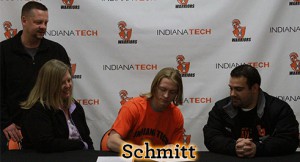 Athletic Mentors co-founder and head hockey coach Mark Olson is tipping his hat to Michael Schmitt, Battle Creek Revolution forward who has just signed with the Indiana Tech men’s hockey team.
Athletic Mentors co-founder and head hockey coach Mark Olson is tipping his hat to Michael Schmitt, Battle Creek Revolution forward who has just signed with the Indiana Tech men’s hockey team.
“Michael’s been with our program for years and has proven himself to be disciplined, tough, and committed to excellence,” Coach Olson said. “He’s an outstanding athlete, and a great guy. Indiana Tech made a good call.”
Schmitt, who hails from Kalamazoo, is a 5-foot-7, 155-pound forward who played in 44 games in the NA3HL where he collected 12 points on seven goals and five assists. While his parents credit Olson’s coaching for much of their son’s “strength, leadership, and mental toughness,” Schmitt’s tireless hours of hard work finally paid off on the ice when he caught the eye of of Indiana Tech’s Head Coach, Frank DiCristofaro.
“I like Michael’s competitive edge,” said DiCristofaro in a press release. “He works hard on the ice and even harder off of it. He had a great understanding of the game and has some deceptive speed through the neutral zone. He is a true student-athlete and is the type of person we want in this program.”
When asked what it means to join the first hockey team at Indiana Tech, Schmitt said, “I am excited to become a part of the first college hockey program at Indiana Tech. The support they get from the school is amazing and the amenities they have is what drew me to their program.”
Forbrush 17k Freestyle Race Report
March 2nd, 2014 by Athletic MentorsNordic skiers Kaitlyn Patterson and Ryan Harris represented Athletic Mentors well at the Forbrush Corner 17k Freestyle on February 15. With temperatures above zero, sunny skies and minimal wind, the participants received a great day for competition success. The Forbrush Corner track is filled with hills, creating a tough, always climbing or descending course. Kaitlyn dominated the race with a first place finish while Harris had an intense battle that landed him third place.
The men’s start was a little rough out of the gate given a few crashes before the first turn and during the wide climb. Skiers were ultra aggressive in getting to the front. Ryan Harris, alongside two other racers, broke away from the pack and had a clear lead, already minutes ahead of any other competitors. At the finish, Ryan was just barely beat by the two competitors; only two seconds separated first thru third place. He finished third with a time of 50:12.
The women’s top three was fairly tight as well, given the 40-second separation of the three places. Kaitlyn led the pack and performed at a fast pace, finishing first for the women and only ten minutes behind the men’s winner with a time of 60:10.
Kaitlyn credits part of her fast performance to the new, RCS Carbonlite hole skis she invested in during the middle of the season. Her new skis are ultra-light, responsive and overall give a faster feel.
“As much as I wanted to think that a strong engine can overcome sub-par equipment, I finally admitted that skis matter a lot in Nordic skiing,” she said. “Even with a warm base structure on cold races, they made a huge difference.”
Kaitlyn felt that she finally put everything together ‚Äî the powerhouse she’s been creating in training felt good and coupled with her new skis, she raced very well.
Although 5 degree weather doesn’t seem warm, competitors were relieved that the conditions were far less brutal than the VASA race the previous weekend, where the temperatures reached several degrees below zero. It was enjoyed enough that according to Kaitlyn, the sun gave ample warmth for post-race food and drinks on the patio.
“Overall, another great day of racing in Northern Michigan,” Kaitlyn said.
Who Is a “Professional” Athlete?
February 22nd, 2014 by tritterYou might be a professional athlete without realizing it. One definition offered by the Merriam Webster dictionary defines the word professional as “characterized by or conforming to the technical or ethical standards of a profession”. Further, it defines a profession as “a principal calling, vocation, or employment”, another way of saying a profession is a job. Seriousness of conduct is at a higher level then what one would approach with a hobby. Though we don’t race for a living, everyone on a team benefits from professionalism. Here are a few ways to be “professional” and how it positively impacts yourself and the team.
Sharp Dressed (Wo)man
Nothing says “conforming to the technical” like a group that looks the same. More than matching jerseys and bibs, a truly professional look synchs socks, helmets, accessory equipment (glasses, gloves, shoe covers, bikes, etc.) and even cool weather wear. It’s imperative riders maintain a clean bike and kit. Team Athletic Mentors’ management puts a lot of attention and effort towards projecting a brand and we all have a role in that.
Take Pride in Your Team
A professionally run team establishes a vision and follows it. TAM has looked to develop riders. Some have gone on to higher ranks, even the ProTour. As a member of the team, you are part of that legacy. When other riders see you they see a team with high standards and a history of success. You have been chosen to continue an image, so take pride. This pride is not just racing or riding in your kit, but wearing the team casual wear during cycling and promotional events.
Team Mates and Sponsors First
Being professional means holding up your end of a bargain. Part of this is supporting the sponsors that provide resources to the team. Take every opportunity to promote sponsors’ products, keeping negative assessments within the team. Following through on your contractual agreements maintains the team’s ability to keep and hold sponsors. Think of your actions as reflecting those on your jersey and in your jersey.
Be an Ambassador
True professionals take responsibility to foster their livelihood. At our level, that means promoting the sport we love. Be approachable by strangers. Look to help more novice racers. Get in front of the camera. Most of us aren’t genetic freaks destine for greatness in cycling, but, rather, people passionate about a sport. Project that passion by supporting it any positive way so people see it means something to someone.
A professional conducts themselves at a high character level consistently. Sharp looking, organized teams get noticed, which makes the need to act your best even more important. Maintain an even keel during the heat of racing. Communicate with others through social media, in person, or other means, as if the spot light was always on. This includes when giving our opinion with race officials and promoters. Don’t forget having your attire leave no doubt who you race for while on the podium.
Add Value to Your Team
A well run team has a lot of moving pieces. Those pieces working in concert are what make an organization better than the sum of its parts. Try to look for ways to help, even if it’s just to offer your assistance. Most athletes have an expertise in some area(s), even if it’s just time, that can benefit everyone. Few good things happen by chance, but through effort by someone that cared.
Support Your Team Mates
One quality of a good team is people want to be a part of it. This usually isn’t the clothes they get, bikes they ride or deals offered. It comes down to feeling part of something where they are supported. Giving assistance, passing on knowledge, watching a fellow team mate and cheering them on are part of this support. It’s always best to feel we can share our triumphs and tragedies.
VASA Race Report
February 21st, 2014 by Athletic MentorsOn February 8, Team Athletic Mentors Nordic Ski racers Alex Vanias, Daniel Yankus, Ryan Halstead and Kaitlyn Patterson competed in the VASA 50k freestyle race. The race start temperature was in the negatives, far undercutting the forecasted temperature of 10 degrees and provided cold, bitter conditions.
There were 69 racers, and as usual, Athletic Mentors racers finished on top. Alex finished second in a time of 2:29:12, Dan took fourth in 2:37:50, Ryan came in 10th in 2:46:23, and Kaitlyn finished third in the women’s field (24th overall) with a time of 3:06:30. The main heat of the race was between winner Eli Brown and Alex.
Complications began the night before when Kaitlyn and Alex stayed up until midnight waxing their skis, only to realize it had been the wrong wax. After testing their skis, however, they didn’t feel too sticky on the abrasive snow. The warmer wax they had used could have been completely removed during the race, which leads to a significant speed decline.
As the race approached, the crew did a few warm-up laps and found the start line. The race began fast, as usual, and Alex stayed in a content position in the back of the lead group strategizing a time to attack and go to the front. Daniel, Ryan and Kaitlyn settled in comfortable positions among their competitors. Eli, the race favorite, kept the race aggressive; he attacked at the 5k and created a large gap between the rest of the racers, making it difficult for anyone to close in and chase him. Alex was determined, however, and did his best to catch up and challenge him for the rest of the race.
The pain set in and the mind games began. Between Eli and Alex up front, the two skiers were pretending to not be tired, keeping things dynamic and competitive. Alex said that from prior experience, he knew Eli was a strong finisher and that he must take the lead and wear him down in order to prevent him from getting any rest.
“We would event come to nearly complete stops trying to get each other to take the lead,” Alex said.
The rest of the crew was not far behind but experienced some difficulty. Dan mentioned that his skis were not gliding well, which set him in a less competitive position.
Up front, a third racer named Milan Biac joined Alex and Eli, and closed in gaps with his fast skis. After executing a planned attack on “the wall” with roughly half a lap left, Alex dropped Milan but couldn’t rid Eli. Alex kept pushing the pace in hope of cracking his competitor’s exhaustion. Unfortunately, Alex hit an obstacle that slowed him down, widening the gap between him and Eli.
“My plan backfired when I bonked on the Jack Pine section up a giant hill,” Alex said. “I just kept pushing. All I could do now was pretend to still have strength, but I knew it was over.”
With 1/2k to go, Eli muscled up a sprint far beyond Alex’s pace and earned his first place position. Alex glided in easy for second place, followed by his teammates not far behind. The whole team had solid individual performances and is already looking forward to next year’s race.
Nordic Ski Team Starts Strong Season at Cote Dame Marie
January 29th, 2014 by Athletic MentorsTeam Athletic Mentors has assembled a great roster of past, present and future skiers. With the excellent snow season this year allowing for highly competitive and sometimes brutal conditions, the 2014 Nordic Ski Team has been pushing limits, reaching season goals and topping the podium.
Five athletes represent Athletic Mentors this year and each of them took top placements in pre-season events. Alex Vanias, Kaitlyn Patterson and Ryan Harris represent the future of the sport, having combined for five individual wins and one relay win so far this year. Daniel Yankus and Jon Morgan round out the team providing leadership and experience, both finishing with great results, adding a win and multiple podium places to the team’s high success. Combined, the group has reached the podium 12 times in just five races.
The official season began Jan. 18 with the prestigious Cote Dame Marie. The men competed in the 24.5 km freestyle race and the women in the 13.3 km freestyle.
As seen in the picture to the left, the start for the men was quick, fast and crowded, yielding 100 total competitors. Alex Vanias led the race and kept the pace up to eventually win in roughly 1 hour and 16 minutes. Behind him, teammate Daniel Yankus finished 2nd in a close sprint, marking a time just a minute and a half behind Vanias. Ryan Harris finished 6th, and Jon Morgan finished 14th. In the women’s freestyle, Kaitlyn Patterson kept the success theme of the day by winning a four-way battle to the line, making her the victor. Only four seconds separated places one through four. Who says slow twitch athletes can’t win a sprint?
For complete results from the Cote Dame Marie, click here.
Follow the “read more” link to see the summary results from the Cote Dame Marie and the other pre-season events. Stay tuned for more big results from Athletic Mentors’ Nordic ski team! Read the rest of this entry »
Power Play: A Power Meter Measurement Product Comparison
January 21st, 2014 by tritterFrom a training standpoint, coaches and self-coached athletes want the most objective power meter measurement possible. For several years, heart rate monitors were used but remained limited, especially for a short-term effort. Exercise labs possess stationary ergometers, but these aren’t usable for a casual group ride. In recent years, manufactures have stepped up their efforts to fill the expanding market of bicycle specific power meters; the following are different approaches complimented with their pros and cons.
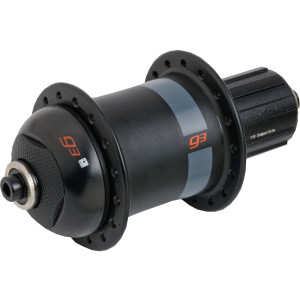 Power Tap was once owned by Tune, but is now property of Cyclops. The device has been improved considerably from its introductory days and remains as the only hub based measuring unit on the market. Power Tap uses the same strain gauge mechanics as many other designs, resulting in the same +/- 1.5% accuracy. Bike to bike moves are easy, and are only a wheel change away. The Power Tap also uses the same popular wireless software (ANT+ Sport) as most other computer head manufactures (such as Garmin) resulting in compatible head units. If you are looking for a device to use on multiple machines, this would be a logical choice. However, if a high-quality racing wheel is needed and power is desired, the hub has to be specially built into it (so no off-the-shelf prebuilt wheels). Unless you wanted to train on this same wheel (which isn’t a usual way to treat an expensive wheel), another training wheel would need to be built, meaning additional cost. Power Tap has recently reduced their pricing significantly, yielding wheels for under $900.
Power Tap was once owned by Tune, but is now property of Cyclops. The device has been improved considerably from its introductory days and remains as the only hub based measuring unit on the market. Power Tap uses the same strain gauge mechanics as many other designs, resulting in the same +/- 1.5% accuracy. Bike to bike moves are easy, and are only a wheel change away. The Power Tap also uses the same popular wireless software (ANT+ Sport) as most other computer head manufactures (such as Garmin) resulting in compatible head units. If you are looking for a device to use on multiple machines, this would be a logical choice. However, if a high-quality racing wheel is needed and power is desired, the hub has to be specially built into it (so no off-the-shelf prebuilt wheels). Unless you wanted to train on this same wheel (which isn’t a usual way to treat an expensive wheel), another training wheel would need to be built, meaning additional cost. Power Tap has recently reduced their pricing significantly, yielding wheels for under $900.
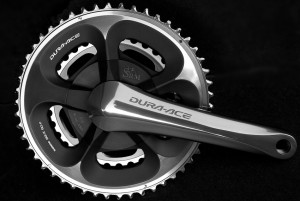 In the area of crank based meters, there are two choices: SRM and Quarq. The first is also the original; German Uli Schoberer released the first SRM in 1987. In developing this power meter, the strain gauges were placed in the spider arm section of a SRM specified crank. SRM is now using off the shelf high-end cranks, like Shimano’s popular Dura Ace, and engineering them to function as power meters. This allows a bike to keep the consistency of a component group (Dura Ace, Ultegra, etc.) and still measure output power in watts. Unfortunately, SRM does not have a user replaceable battery, therefore the unit must be sent back ever 1900 hours of use for replacement. SRM is testing a rechargeable battery that uses a USB port and needs attention after approximately 300 hours or use, but isn’t in production yet. The SRM can be paired with a 3rd party compatible ANT+ head unit, which allows for technology expansion. However, while most head units create an average by measuring one of the four data points every second, the SRM specific Power Control unit measures all four, then averages them for that second. Thus, for shorter measured durations such as a sprint, the Power Control unit provides more accuracy in power measuring. One common feature not on the Power Control unit is GPS. Additionally, SRM uses only the higher end cranks on the market, resulting in the highest prices, with a range from $2,400 to $4,000.
In the area of crank based meters, there are two choices: SRM and Quarq. The first is also the original; German Uli Schoberer released the first SRM in 1987. In developing this power meter, the strain gauges were placed in the spider arm section of a SRM specified crank. SRM is now using off the shelf high-end cranks, like Shimano’s popular Dura Ace, and engineering them to function as power meters. This allows a bike to keep the consistency of a component group (Dura Ace, Ultegra, etc.) and still measure output power in watts. Unfortunately, SRM does not have a user replaceable battery, therefore the unit must be sent back ever 1900 hours of use for replacement. SRM is testing a rechargeable battery that uses a USB port and needs attention after approximately 300 hours or use, but isn’t in production yet. The SRM can be paired with a 3rd party compatible ANT+ head unit, which allows for technology expansion. However, while most head units create an average by measuring one of the four data points every second, the SRM specific Power Control unit measures all four, then averages them for that second. Thus, for shorter measured durations such as a sprint, the Power Control unit provides more accuracy in power measuring. One common feature not on the Power Control unit is GPS. Additionally, SRM uses only the higher end cranks on the market, resulting in the highest prices, with a range from $2,400 to $4,000.
http://www.srm.de/srm-training-system/what-is-srm/
 The second popular crank-based power meter is the SRAM owned Quarq. This company shipped their first units in mid 2008. Unlike SRM, who incorporates the strain gauges into the one-piece spider/arm of the crank, Quarq looked at the still popular market that had three-piece cranks (spider, left crank arm, right crank arm) and made a replaceable spider that had the necessary electronics. This brought the price down considerably and offered a user replaceable battery, making the product consumer friendly. Quarq offers models using Cannondale, Specialized, and SRAM cranks, and has two new models, the high end Elsa and more affordable Riken. Both have similar electronics, offer the same +/- 1.5% accuracy as other power meters, and no longer need to be recalibrated when chain rings are replaced. The Elsa has lighter crank construction and offers the ability to indirectly measure separate leg strengths. All units use the ANT+ sport licensing, and pricing runs roughly 30 to 40% less then SRMs.
The second popular crank-based power meter is the SRAM owned Quarq. This company shipped their first units in mid 2008. Unlike SRM, who incorporates the strain gauges into the one-piece spider/arm of the crank, Quarq looked at the still popular market that had three-piece cranks (spider, left crank arm, right crank arm) and made a replaceable spider that had the necessary electronics. This brought the price down considerably and offered a user replaceable battery, making the product consumer friendly. Quarq offers models using Cannondale, Specialized, and SRAM cranks, and has two new models, the high end Elsa and more affordable Riken. Both have similar electronics, offer the same +/- 1.5% accuracy as other power meters, and no longer need to be recalibrated when chain rings are replaced. The Elsa has lighter crank construction and offers the ability to indirectly measure separate leg strengths. All units use the ANT+ sport licensing, and pricing runs roughly 30 to 40% less then SRMs.
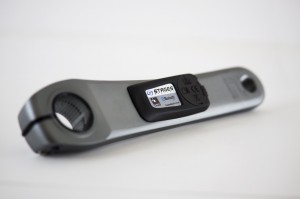 A new player on the market is Stages, who began selling their products in 2012. Like other makers, strain gauges are used. However, Stages’ gauges are located in a single, thin pod that is fastened to a brand specific left crank arm, requiring the replacement of the existing crank arm. The process is simple: replace the arm, pair the 20g meter with your head unit of choice, and that’s it. The system multiplies this single power reading by two to get your total power, making the assumption both legs are similar in strength. Stages states only about 5% of the riders have a significant difference. One drawback is that only metal crank arms are offered, which typically means Shimano. A full range of models exist (105, Ultegra, and Dura Ace), and are very reasonably priced at $600 to $900. These systems are ANT + compatible and have the new Bluetooth transmission. Accuracy is rated at +/- 2%, without factoring in any possible leg discrepancies.
A new player on the market is Stages, who began selling their products in 2012. Like other makers, strain gauges are used. However, Stages’ gauges are located in a single, thin pod that is fastened to a brand specific left crank arm, requiring the replacement of the existing crank arm. The process is simple: replace the arm, pair the 20g meter with your head unit of choice, and that’s it. The system multiplies this single power reading by two to get your total power, making the assumption both legs are similar in strength. Stages states only about 5% of the riders have a significant difference. One drawback is that only metal crank arms are offered, which typically means Shimano. A full range of models exist (105, Ultegra, and Dura Ace), and are very reasonably priced at $600 to $900. These systems are ANT + compatible and have the new Bluetooth transmission. Accuracy is rated at +/- 2%, without factoring in any possible leg discrepancies.
http://www.stagescycling.com/stagespower
 The newest player on the market is Garmin’s Vector pedal power meter. This technology was acquired from MetriGear, who showed prototypes at a few yearly conventions but couldn’t get the product to the market. Garmin ran into the same problem, but finally delivered this last year. Obviously, the greatest advantage is portability, as a wrench is all you need to move power-measuring capability from bike to bike. In addition, there is a wealth of knowledge with left and right real time readouts, as well as a total power value. The price is below most crank based units at about $1700, and sneaks in at about 45g more than a normal pedal system. However, the heart of the unit is a Look Keo pedal, so the user should find that mechanism to their liking. As a downfall, the system uses battery life considerably faster then other meters, needing a change every 175 hours. Each pedal requires its own battery, and crashes will likely see your expensive power meter grind across the pavement. Being a Garmin product, the system uses the ANT+ sport software for wireless transmission.
The newest player on the market is Garmin’s Vector pedal power meter. This technology was acquired from MetriGear, who showed prototypes at a few yearly conventions but couldn’t get the product to the market. Garmin ran into the same problem, but finally delivered this last year. Obviously, the greatest advantage is portability, as a wrench is all you need to move power-measuring capability from bike to bike. In addition, there is a wealth of knowledge with left and right real time readouts, as well as a total power value. The price is below most crank based units at about $1700, and sneaks in at about 45g more than a normal pedal system. However, the heart of the unit is a Look Keo pedal, so the user should find that mechanism to their liking. As a downfall, the system uses battery life considerably faster then other meters, needing a change every 175 hours. Each pedal requires its own battery, and crashes will likely see your expensive power meter grind across the pavement. Being a Garmin product, the system uses the ANT+ sport software for wireless transmission.
http://sites.garmin.com/vector/
It is obvious that power meter development is on the rise and will continue to become more compatible, more convenient, and more advanced. Any of these products will complete its task of measuring your power output for power-based training. The choice really comes down to how often you want to move it, how accurate you need the data and how much you’re willing to pay.




 Our Hockey Site
Our Hockey Site Team AM
Team AM


